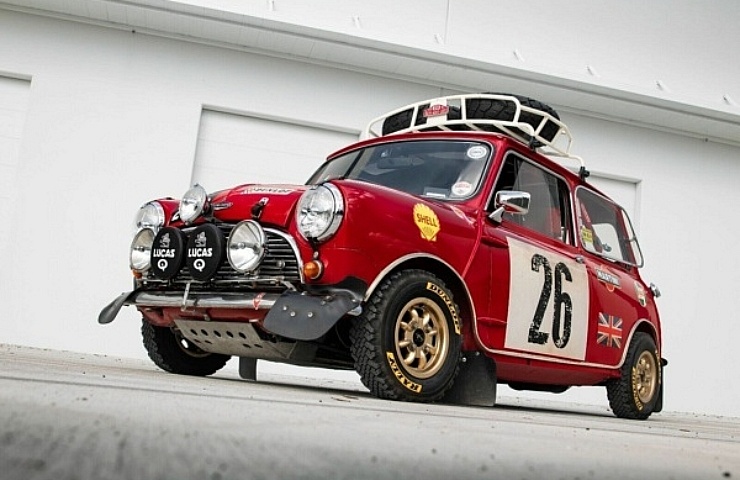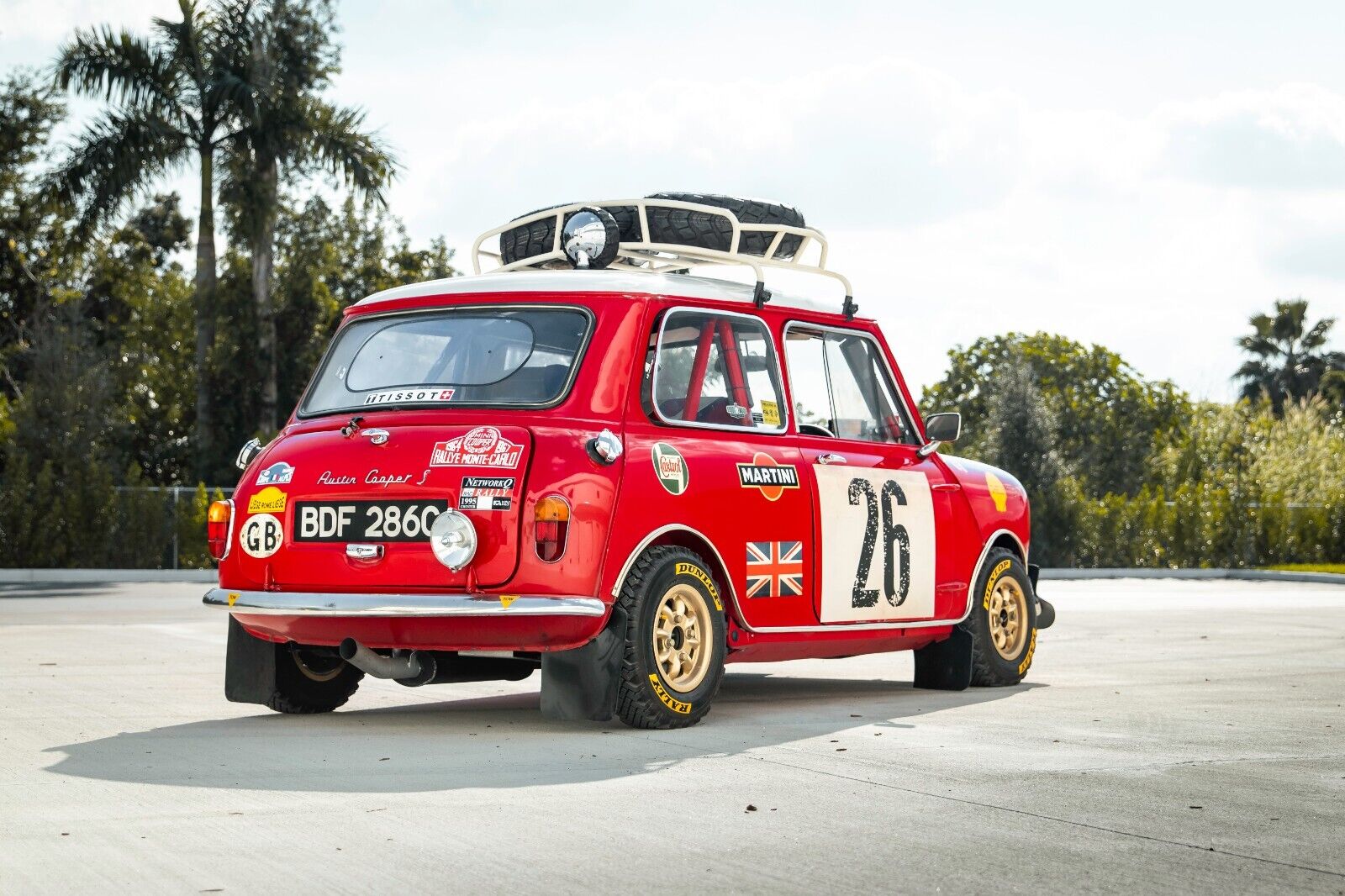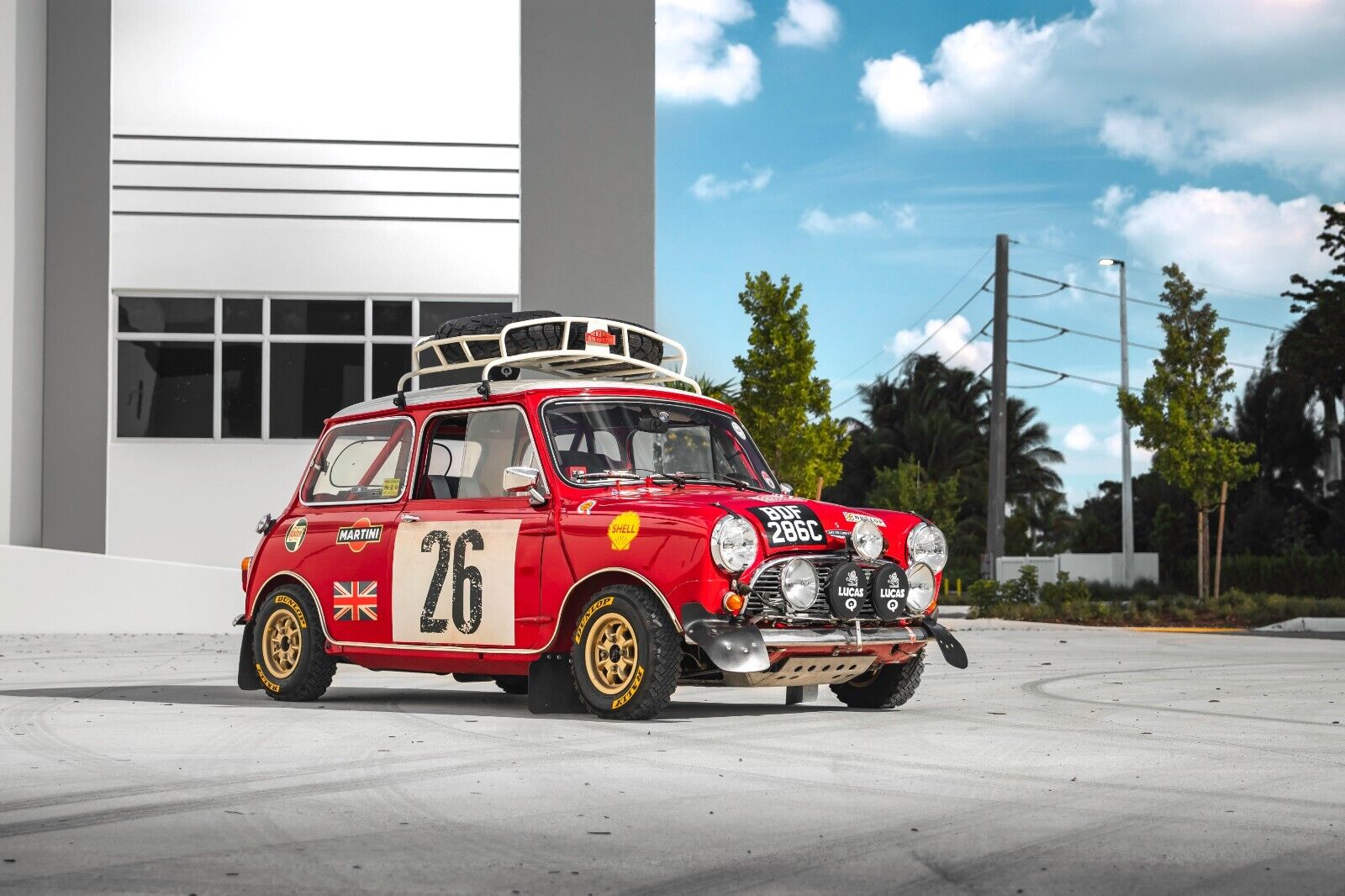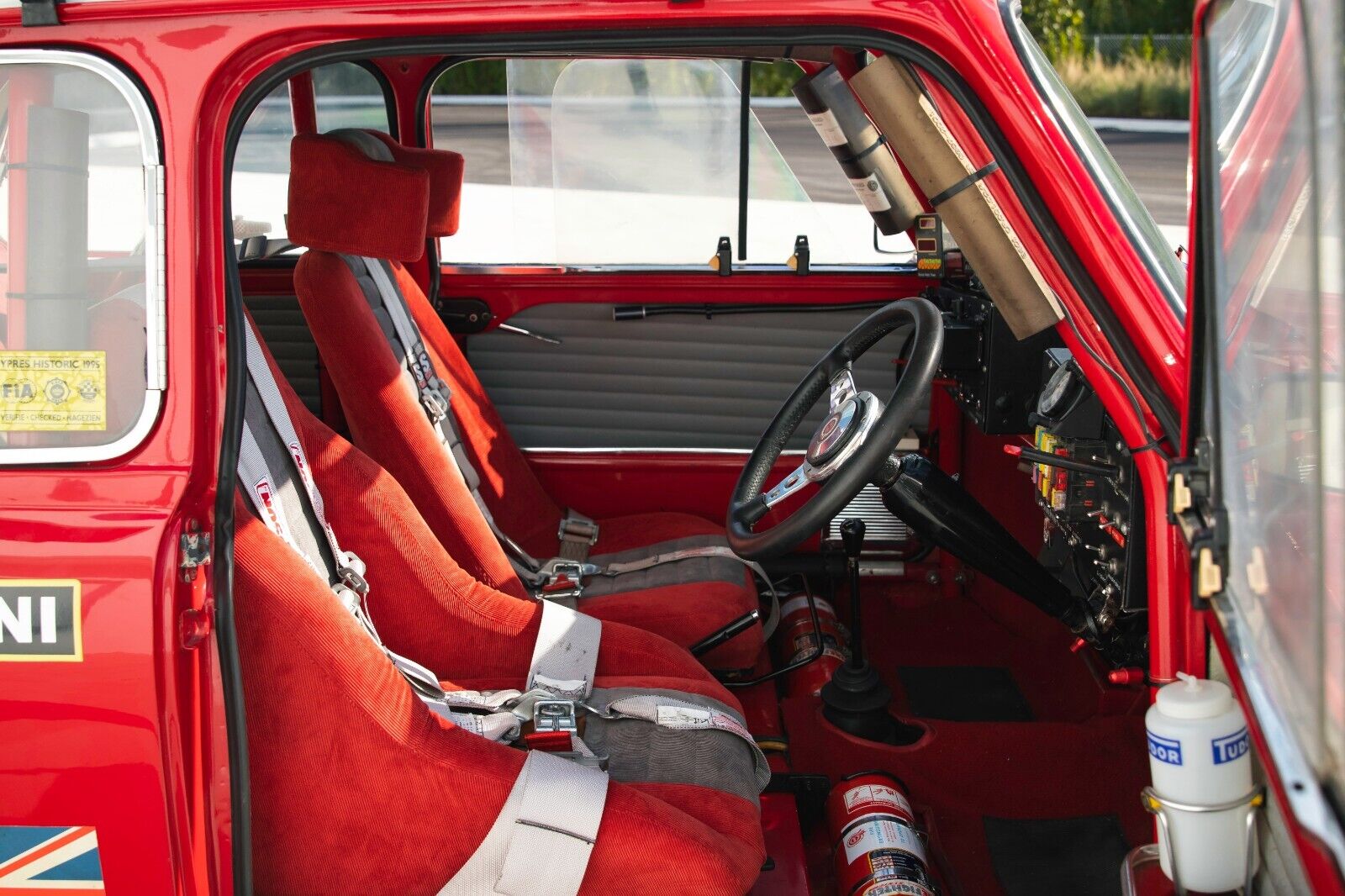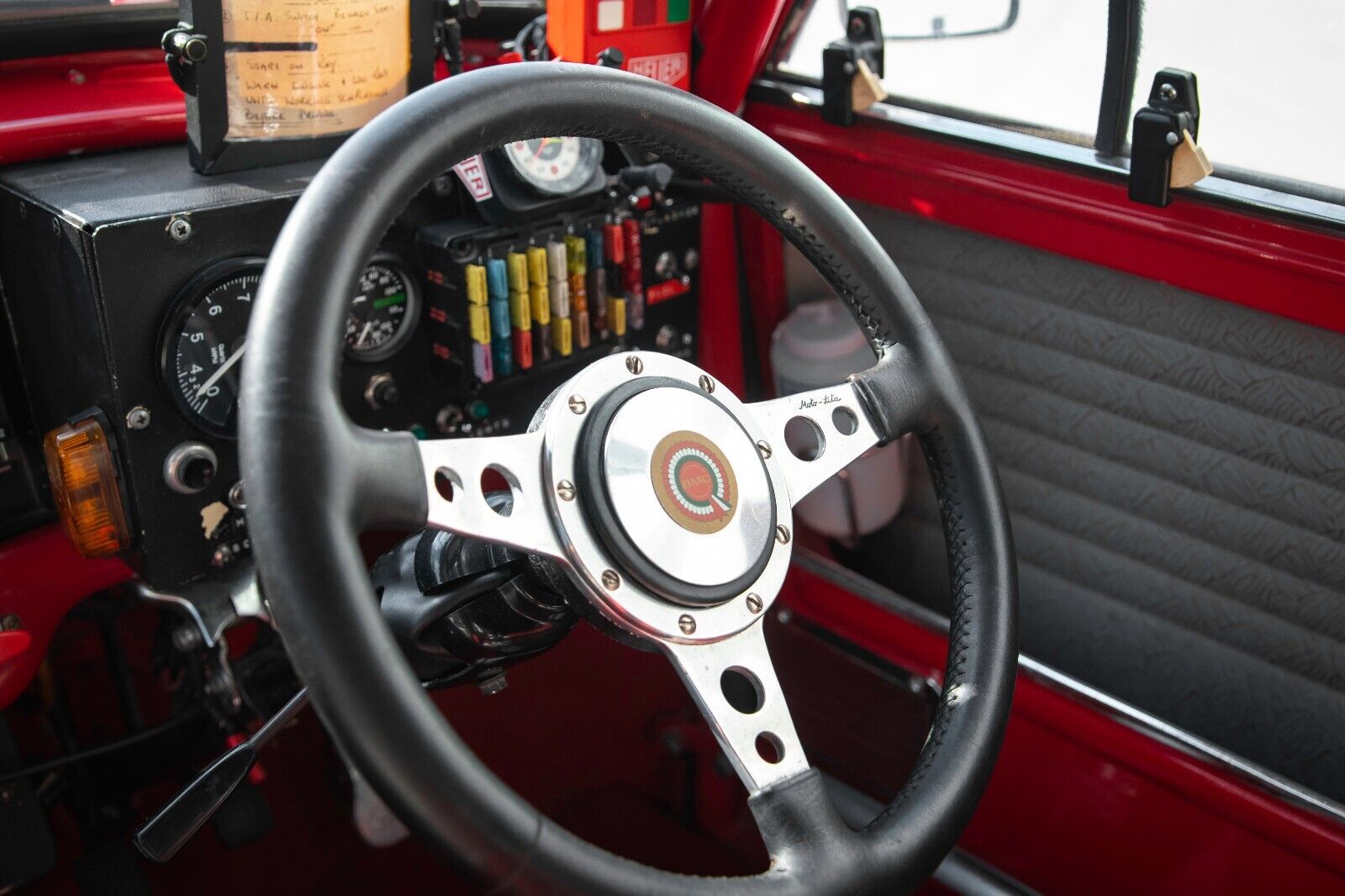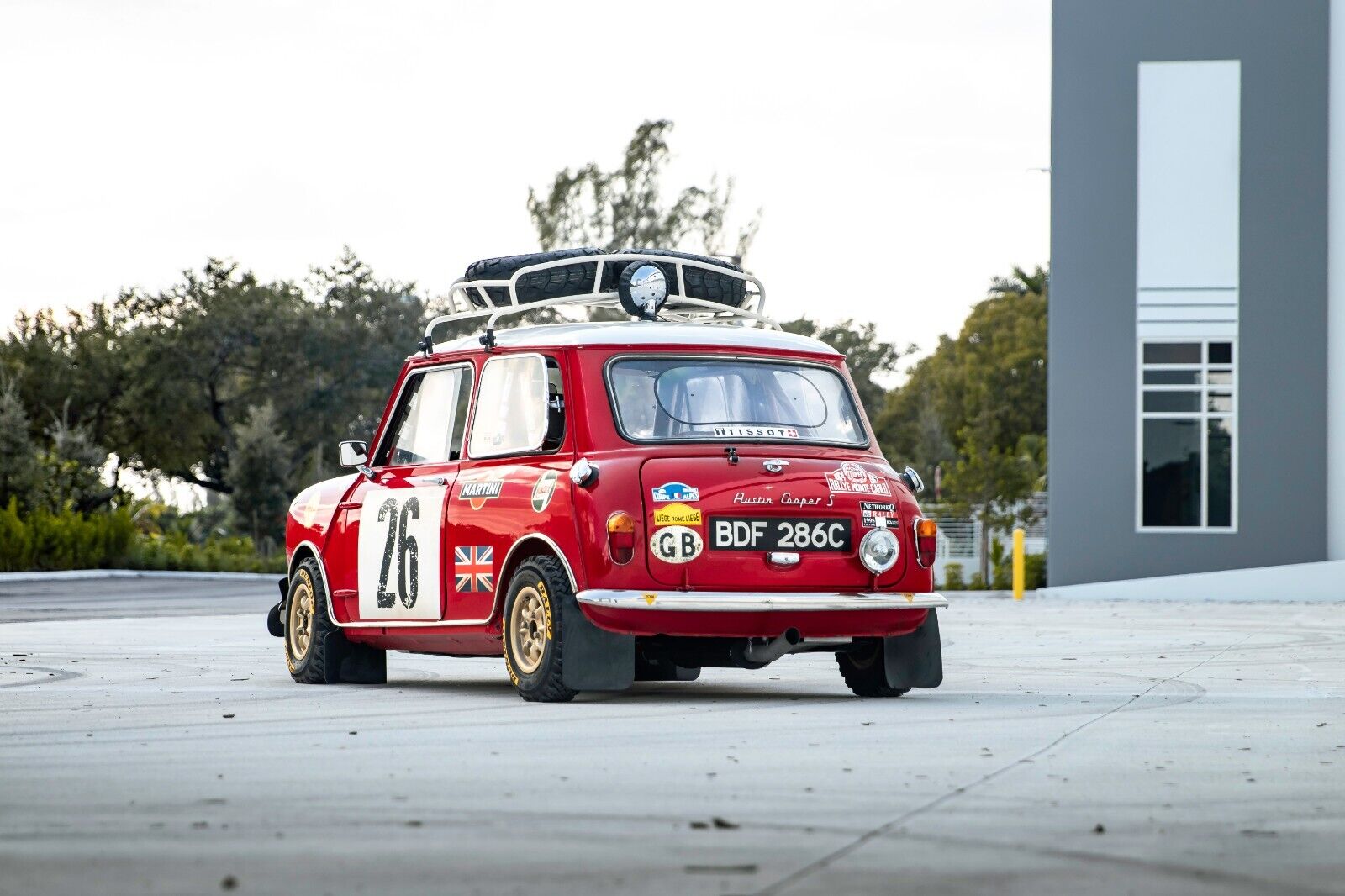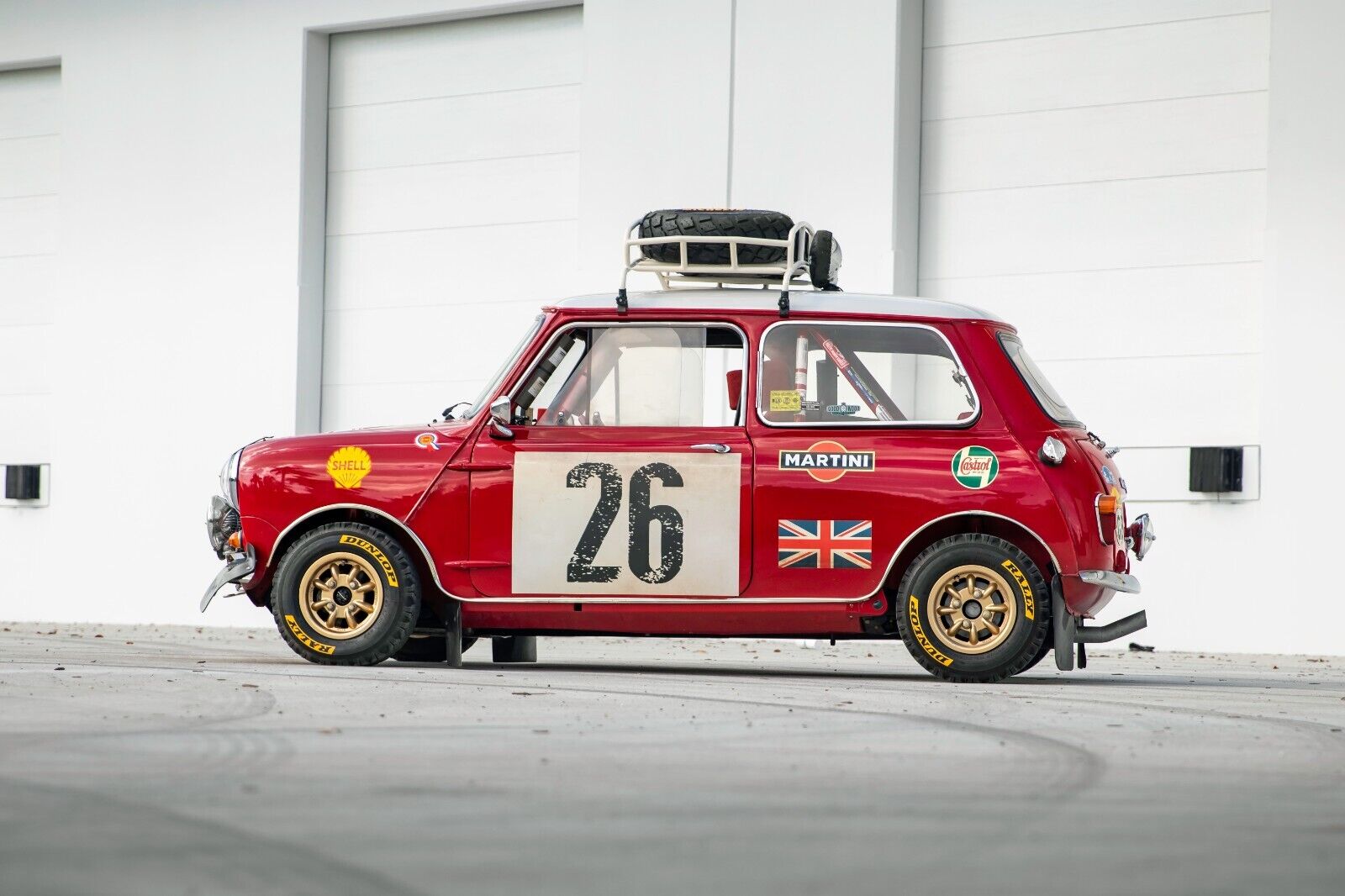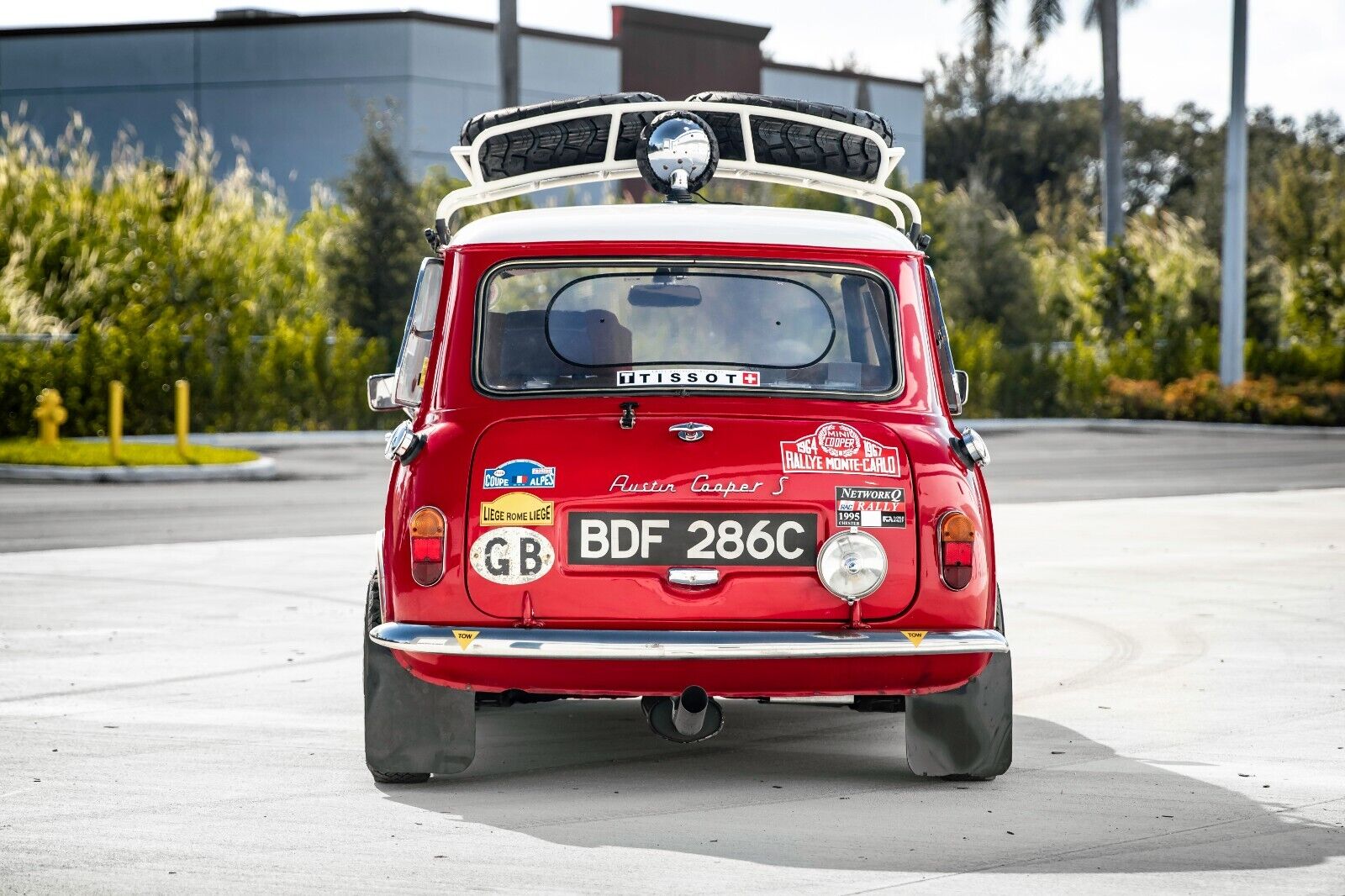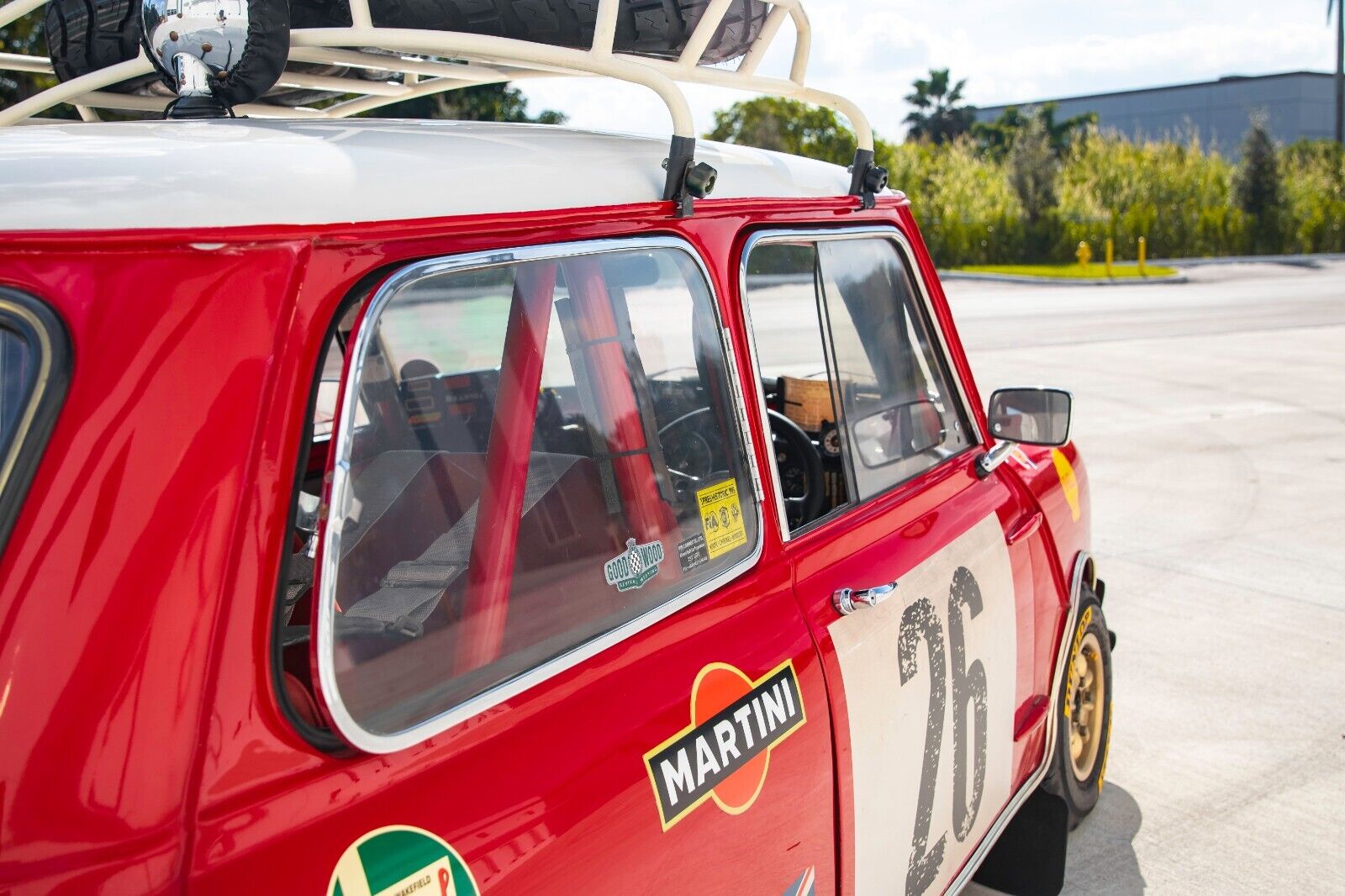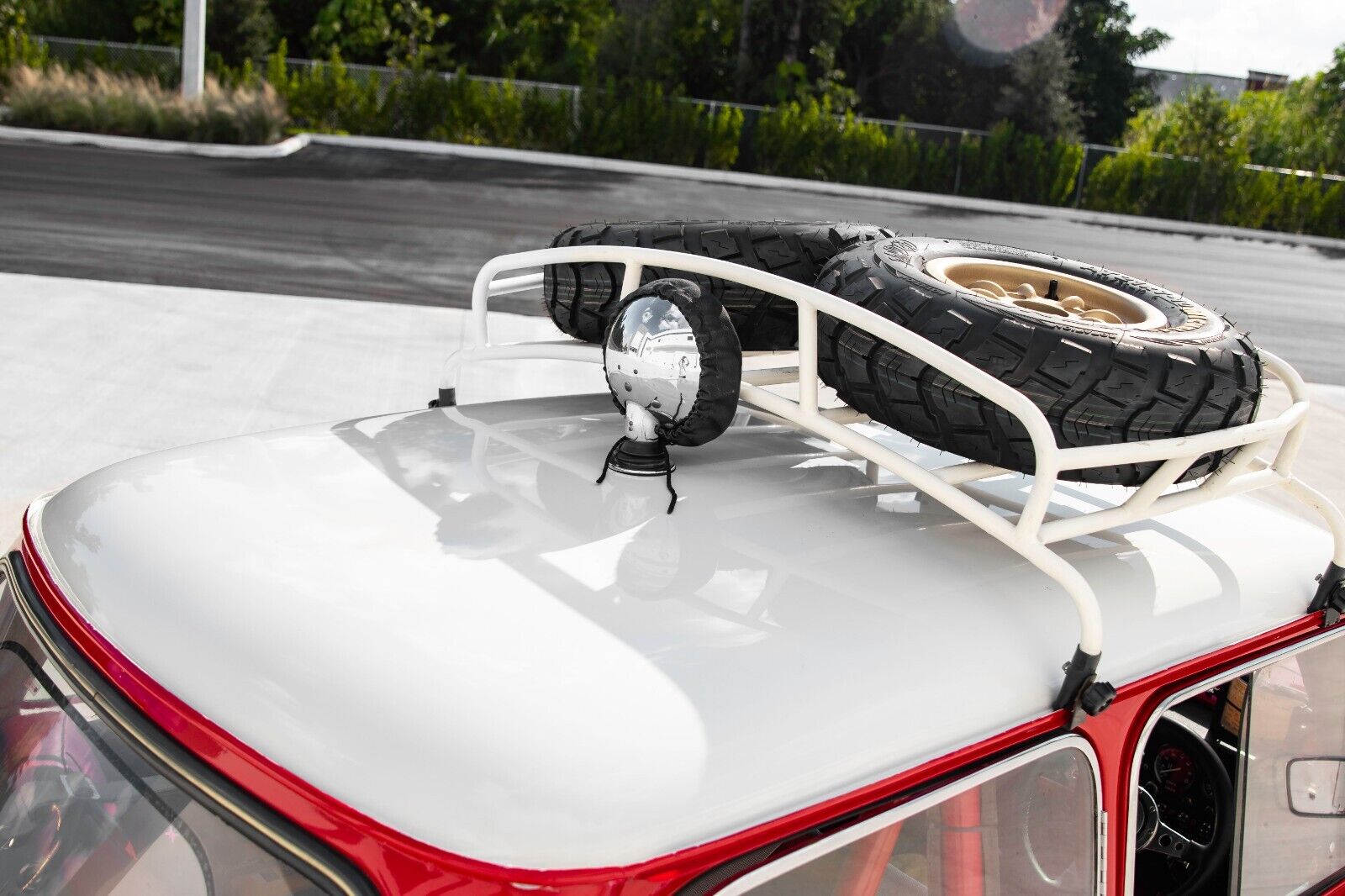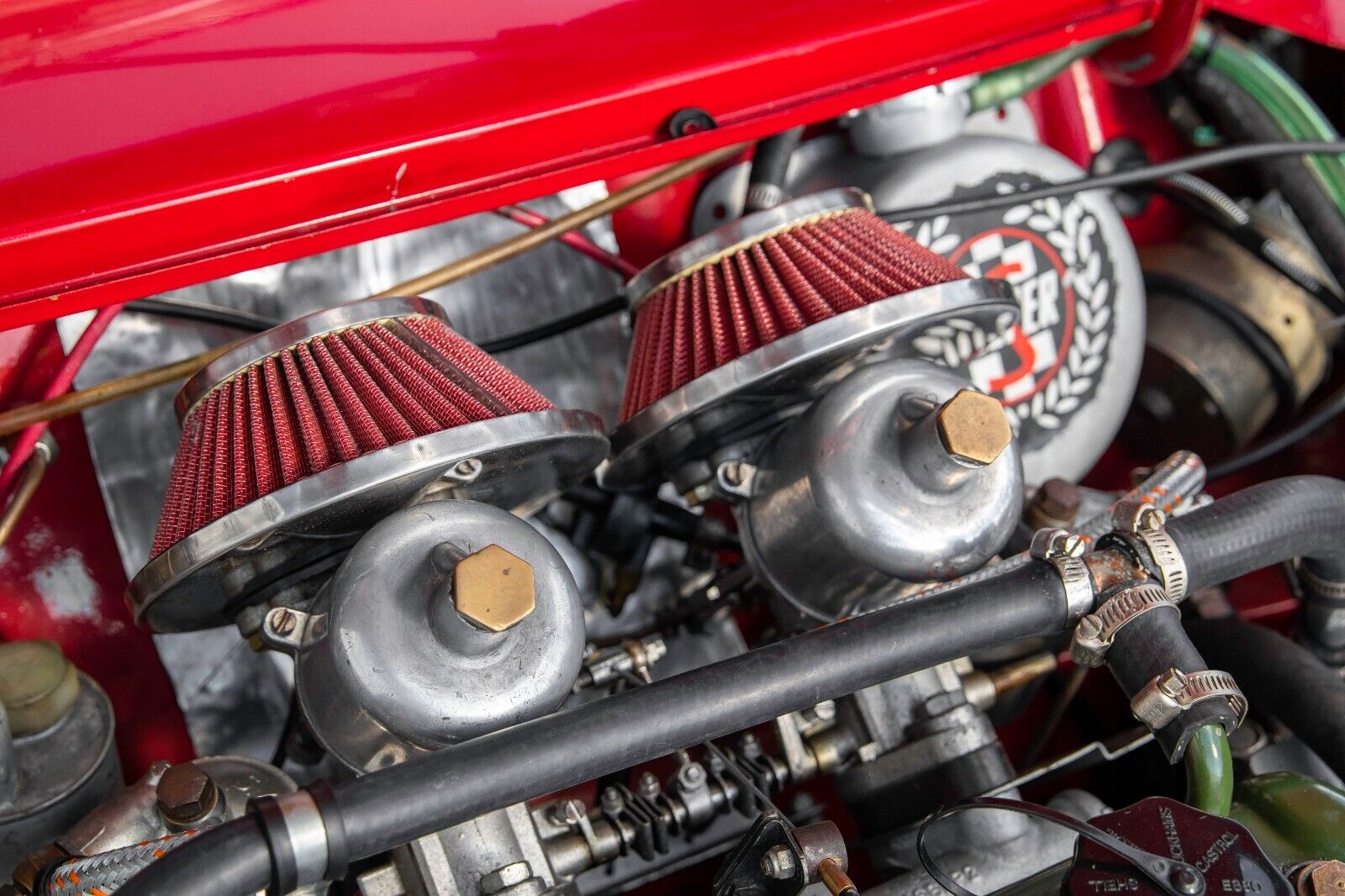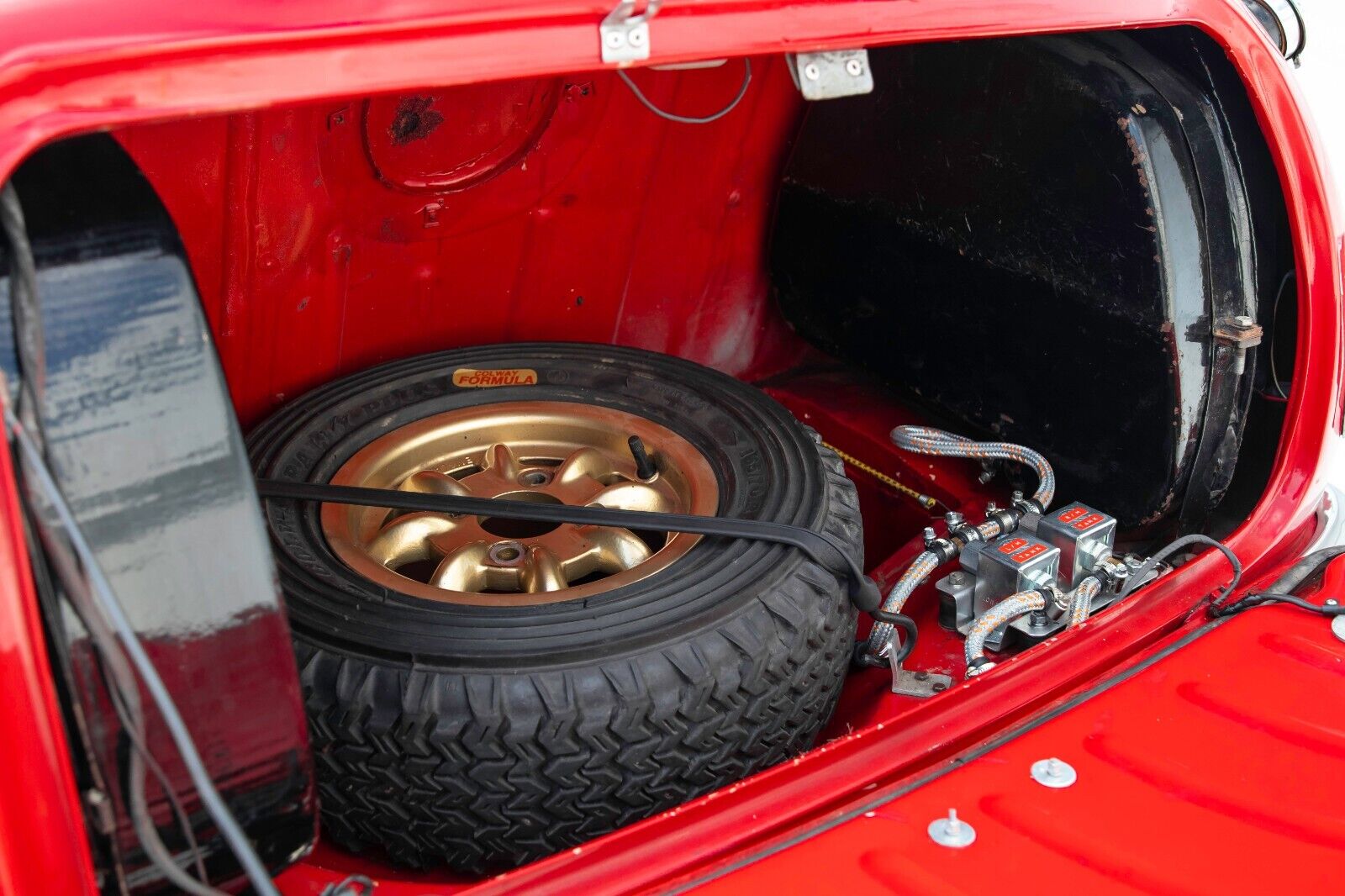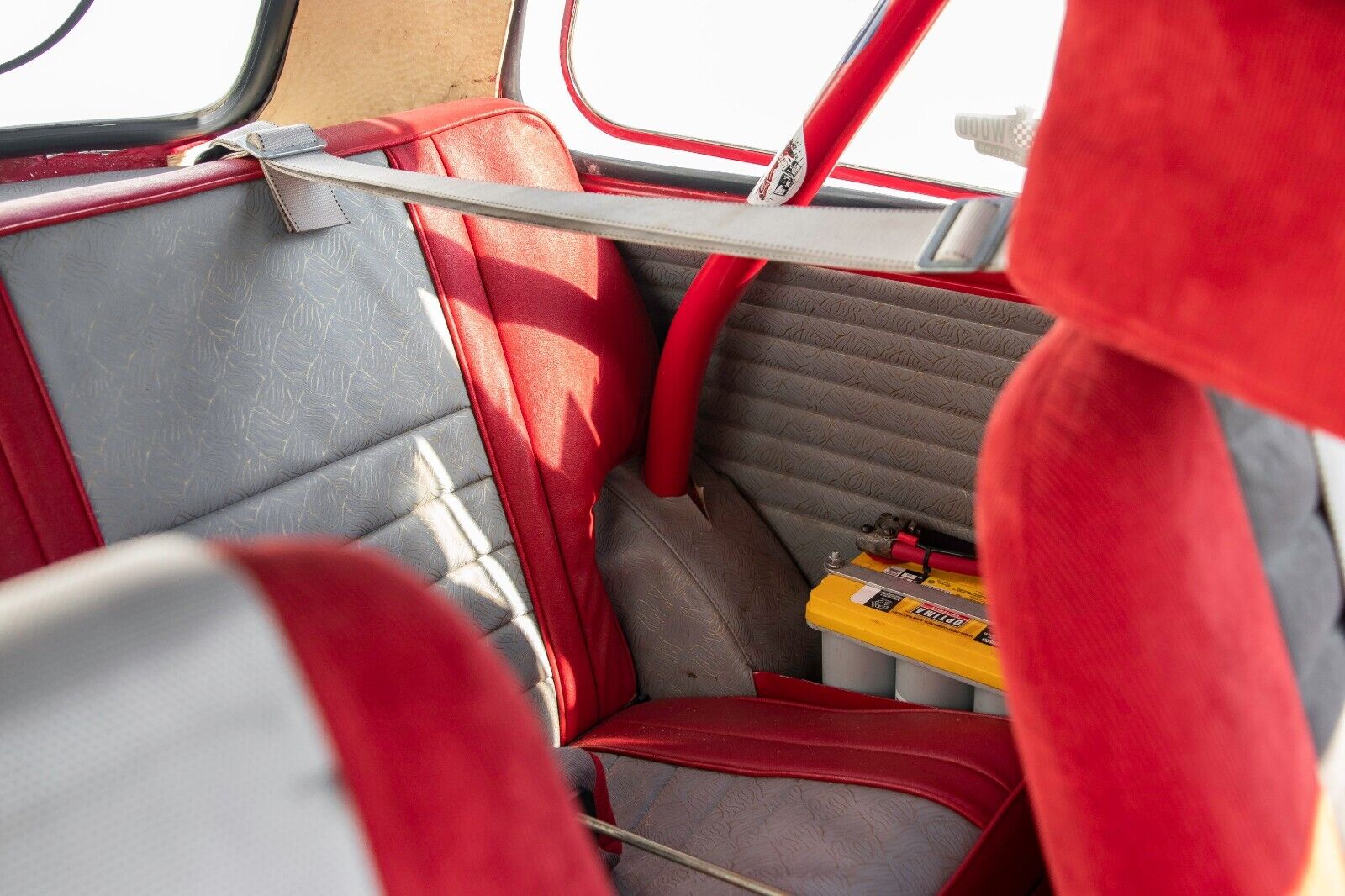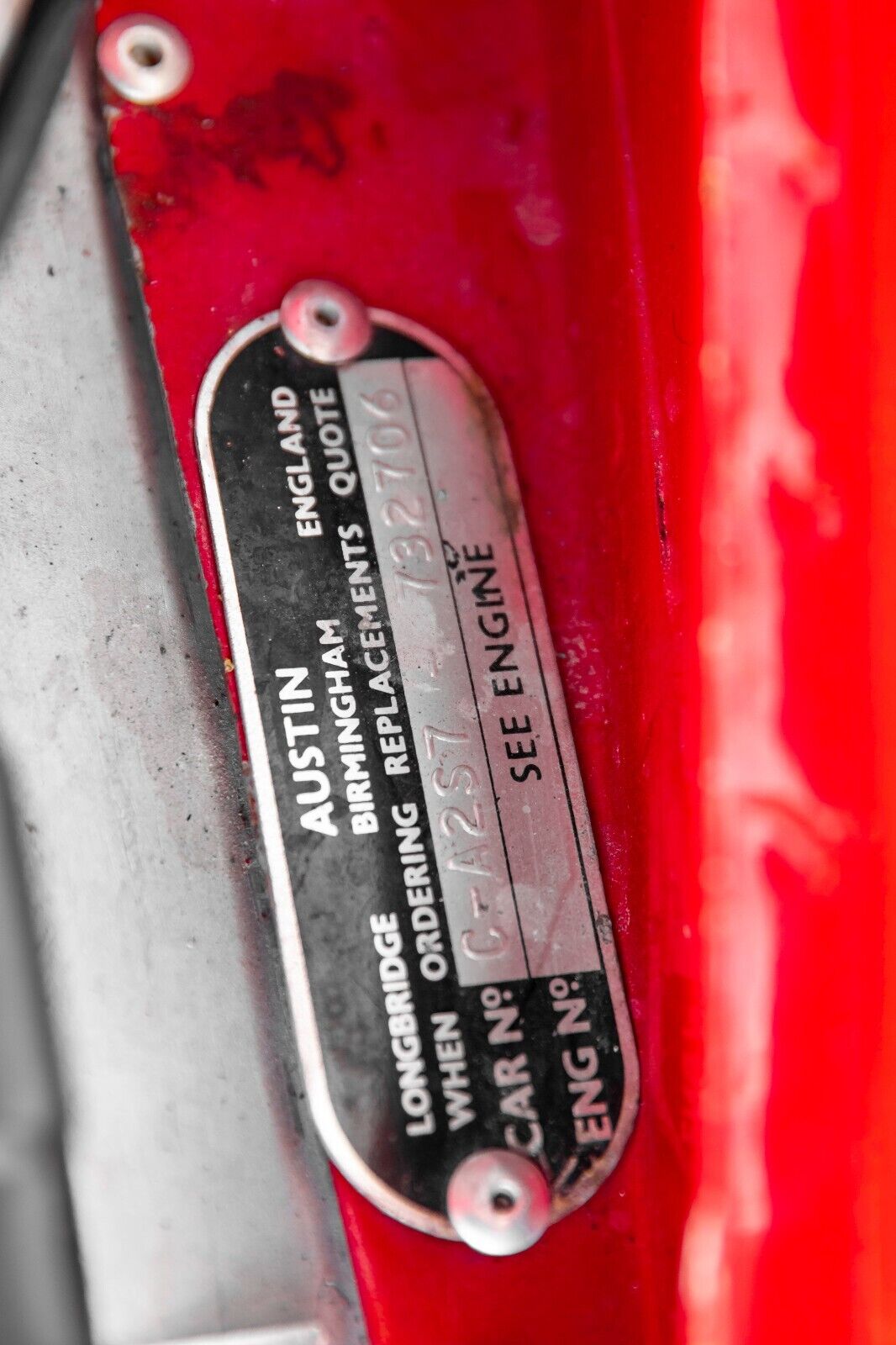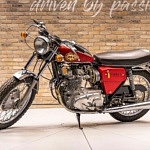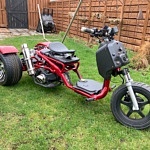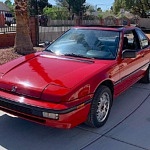The first iteration of the Austin Mini Cooper was a rally star. With drivers like Timo Makinen and Paddy Hopkirk, it won 32 rallies between 1960 and 1972. With Hopkirk at the wheel, a Mini won the Circuit of Ireland Rally in both 1965 and 1967, and the Monte Carlo Rally in 1964, 1965, and 1967.
Want to relive those days? This 1965 Austin Mini Cooper listed on eBay is a faithful example of those competition cars. It’s a right-hand-drive FlA-registered and homologated historic rally race car that spent years in the Cayman Motor Museum. It was in battered but highly original condition, still showcasing the mud from its last off-road rally in England (circa 2008).
Austin Mini Cooper: Race, Restore, Repeat
The car, with some rust evident, underwent a four-year restoration after being rescued from the museum. The undercarriage and engine bay were stripped to bare metal and repainted, and all mechanical components—the motor, suspension, steering, and brakes—were rebuilt. The body received a sympathetic restoration, with the competition patina intact (though not the mud).
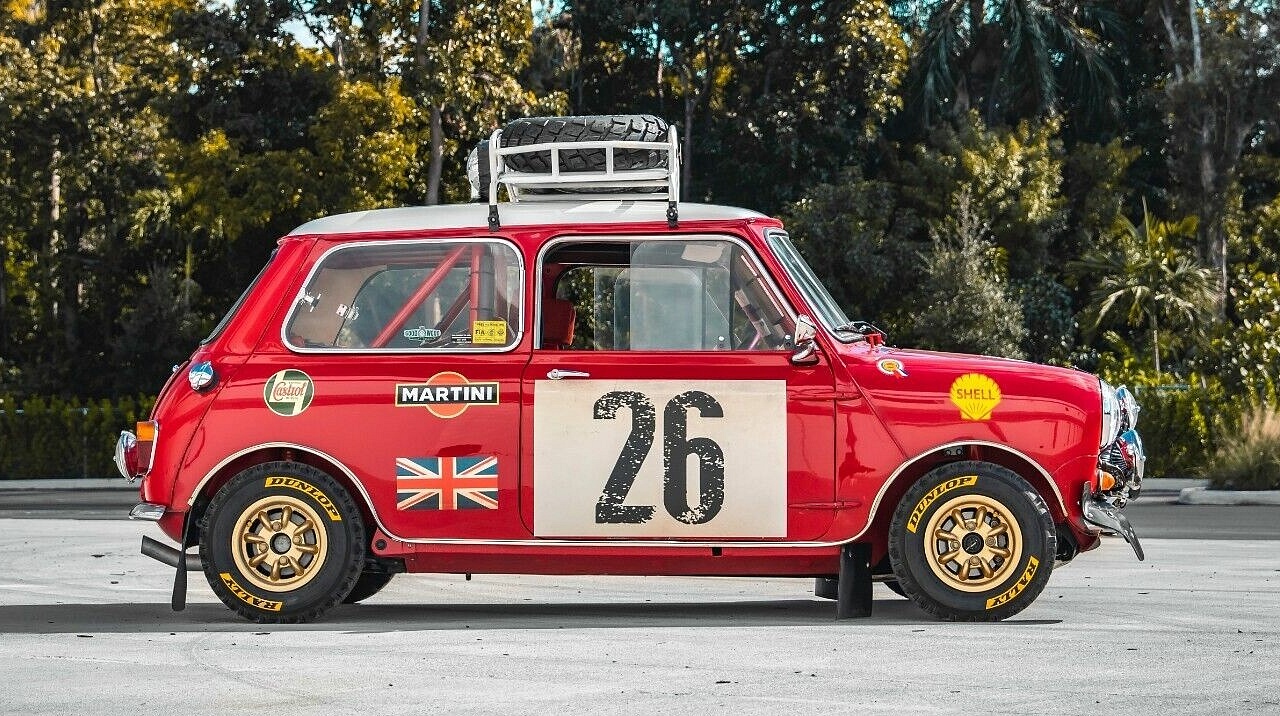
The car was sympathetically rebuilt, retaining the original race patina.
This is one quick Austin Mini Cooper. The original 1,275-cc four-cylinder engine is still in place, built to race specs and producing 95 horsepower at 5,800 rpm. It has twin 1.5-inch SU carbs, a four-speed close-ratio gearbox with straight-cut gears, and a standard differential with a 4.1:1 ratio. Only 40 miles have been covered since the rebuild.
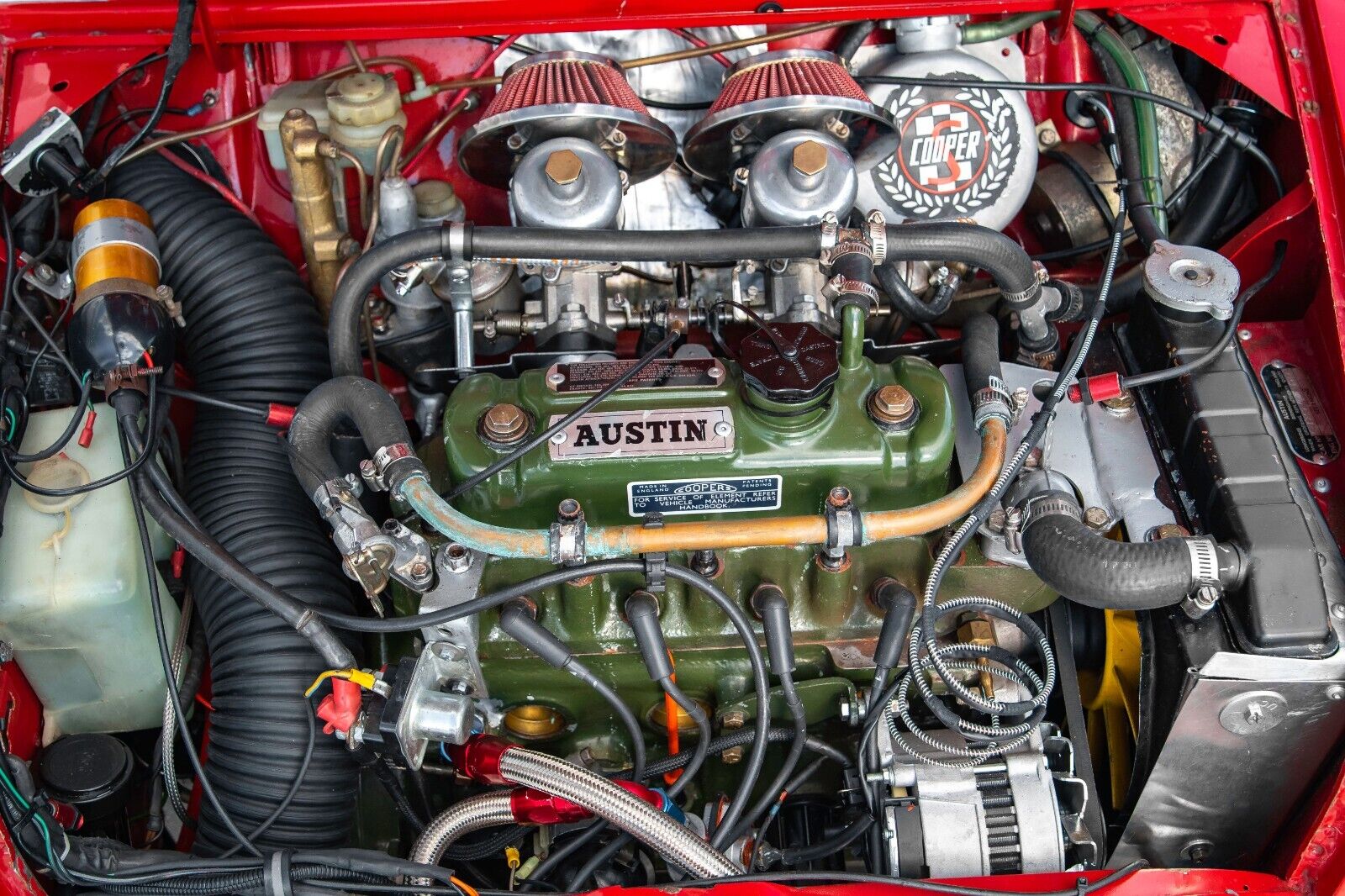
The original 1,275-cc motor now puts out 95 horsepower.
The Mini will maintain its cool in racing conditions. It has a 13-row high-flow oil cooler, a twin-core radiator, and a high-output electric fan. Shifting is via a racing clutch with a heavy-duty pressure plate and lightweight flywheel. There’s a low-restriction exhaust and a high-output alternator.
A Dural sump shield protects the oil pan from the rocky debris often found on rally stages. Koni shocks keep the wheels planted. Stopping comes from brakes with a five-diaphragm servo, seven-inch competition rotors and rear drums (with bottom protector plates), and Goodridge stainless braided brake lines. The twin fuel tanks hold 13 gallons.
The interior was not only fully restored, but also set up with the necessary rally equipment. It’s not just about going fast, but getting to the right place on time.
Museum No More, It’s Time to Race
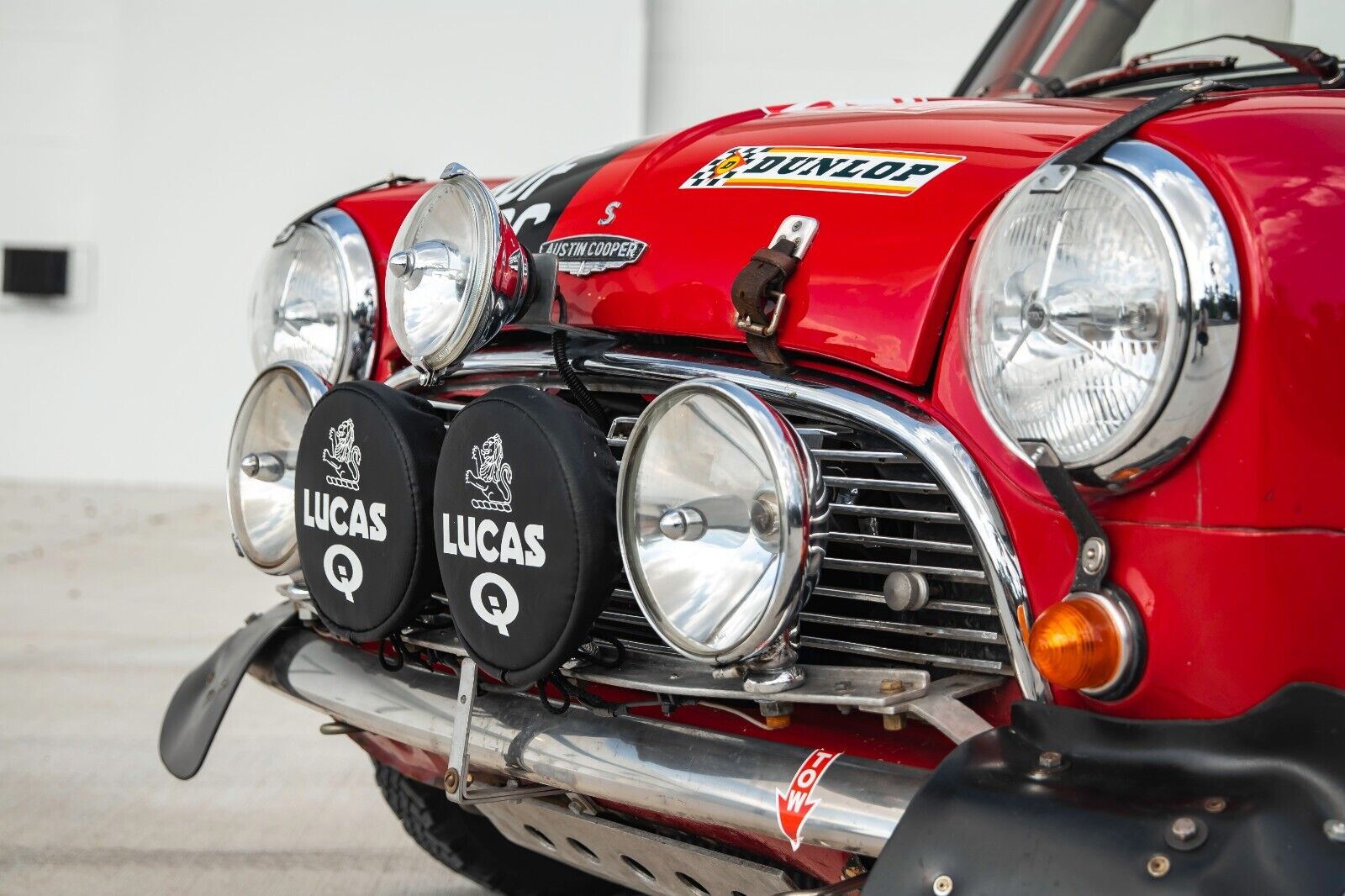
The Mini looks ready for rally competition.
This Austin Mini Cooper looks the part, with the rashes, scars, and scrapes from the rugged rally courses, but with the rust removed. The roof rack is removable, the Dunlop rally tires have 99 percent of their tread, and the car is fully equipped with covered Lucas spotlights for night work (five spotlights in all).
It looks like it should be in parc fermé in 1965. Sponsor stickers festoon the Mini, along with big “26” competition numbers.
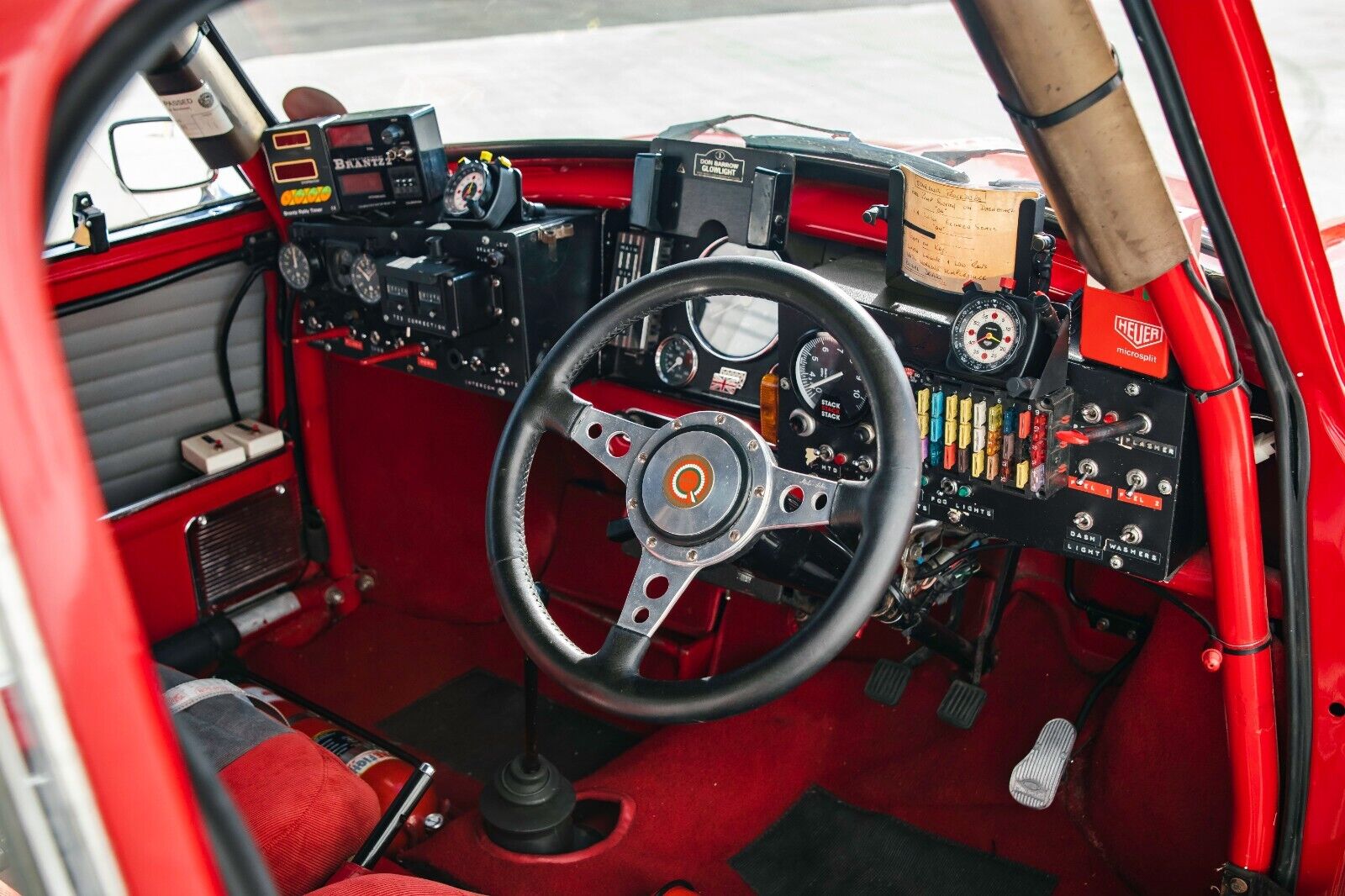
The interior was restored, then fully equipped with rally equipment.
It seems a shame that a car like this sat in a museum for so long. It needs to be competing, and the US has many such opportunities for historic vehicles. Rallying is hard on cars, so a steady supply of parts is necessary. eBay supports the Mini Cooper generously, from emblems to engines.
Shop now for Mini Coopers
